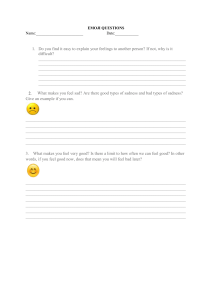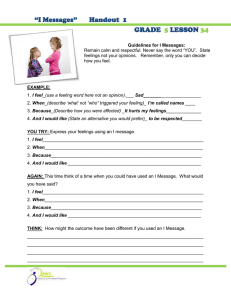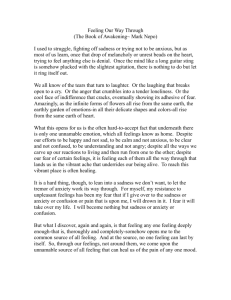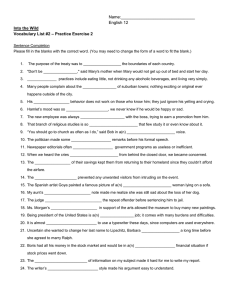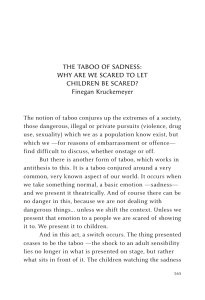Document 14207102
advertisement
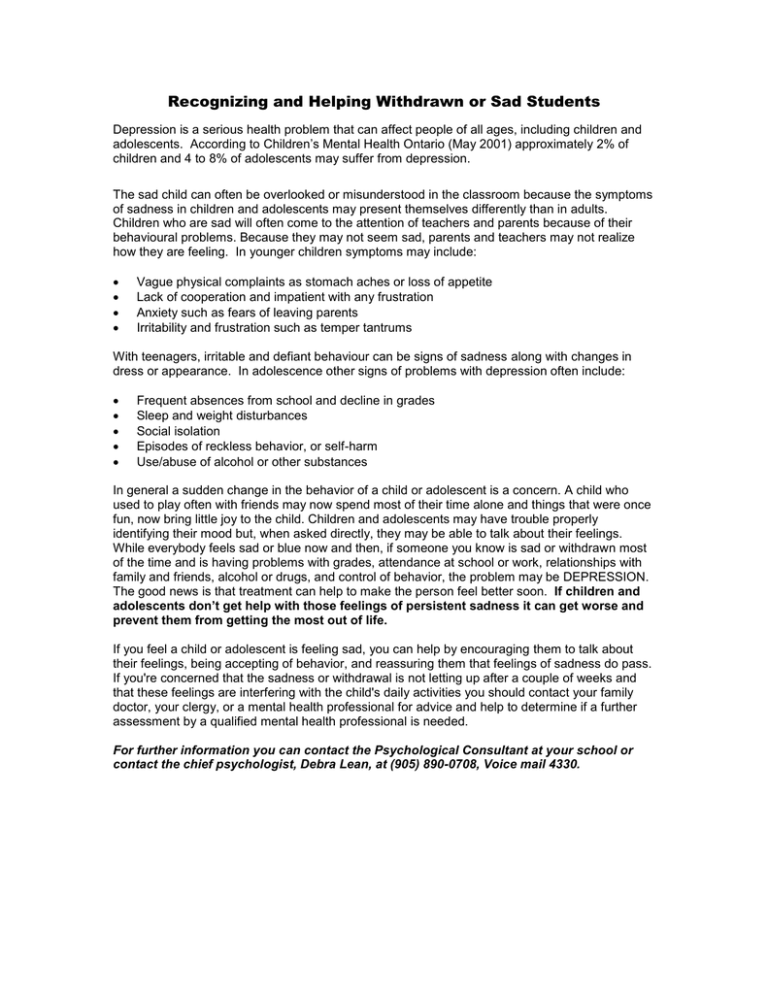
Recognizing and Helping Withdrawn or Sad Students Depression is a serious health problem that can affect people of all ages, including children and adolescents. According to Children’s Mental Health Ontario (May 2001) approximately 2% of children and 4 to 8% of adolescents may suffer from depression. The sad child can often be overlooked or misunderstood in the classroom because the symptoms of sadness in children and adolescents may present themselves differently than in adults. Children who are sad will often come to the attention of teachers and parents because of their behavioural problems. Because they may not seem sad, parents and teachers may not realize how they are feeling. In younger children symptoms may include: Vague physical complaints as stomach aches or loss of appetite Lack of cooperation and impatient with any frustration Anxiety such as fears of leaving parents Irritability and frustration such as temper tantrums With teenagers, irritable and defiant behaviour can be signs of sadness along with changes in dress or appearance. In adolescence other signs of problems with depression often include: Frequent absences from school and decline in grades Sleep and weight disturbances Social isolation Episodes of reckless behavior, or self-harm Use/abuse of alcohol or other substances In general a sudden change in the behavior of a child or adolescent is a concern. A child who used to play often with friends may now spend most of their time alone and things that were once fun, now bring little joy to the child. Children and adolescents may have trouble properly identifying their mood but, when asked directly, they may be able to talk about their feelings. While everybody feels sad or blue now and then, if someone you know is sad or withdrawn most of the time and is having problems with grades, attendance at school or work, relationships with family and friends, alcohol or drugs, and control of behavior, the problem may be DEPRESSION. The good news is that treatment can help to make the person feel better soon. If children and adolescents don’t get help with those feelings of persistent sadness it can get worse and prevent them from getting the most out of life. If you feel a child or adolescent is feeling sad, you can help by encouraging them to talk about their feelings, being accepting of behavior, and reassuring them that feelings of sadness do pass. If you're concerned that the sadness or withdrawal is not letting up after a couple of weeks and that these feelings are interfering with the child's daily activities you should contact your family doctor, your clergy, or a mental health professional for advice and help to determine if a further assessment by a qualified mental health professional is needed. For further information you can contact the Psychological Consultant at your school or contact the chief psychologist, Debra Lean, at (905) 890-0708, Voice mail 4330.
